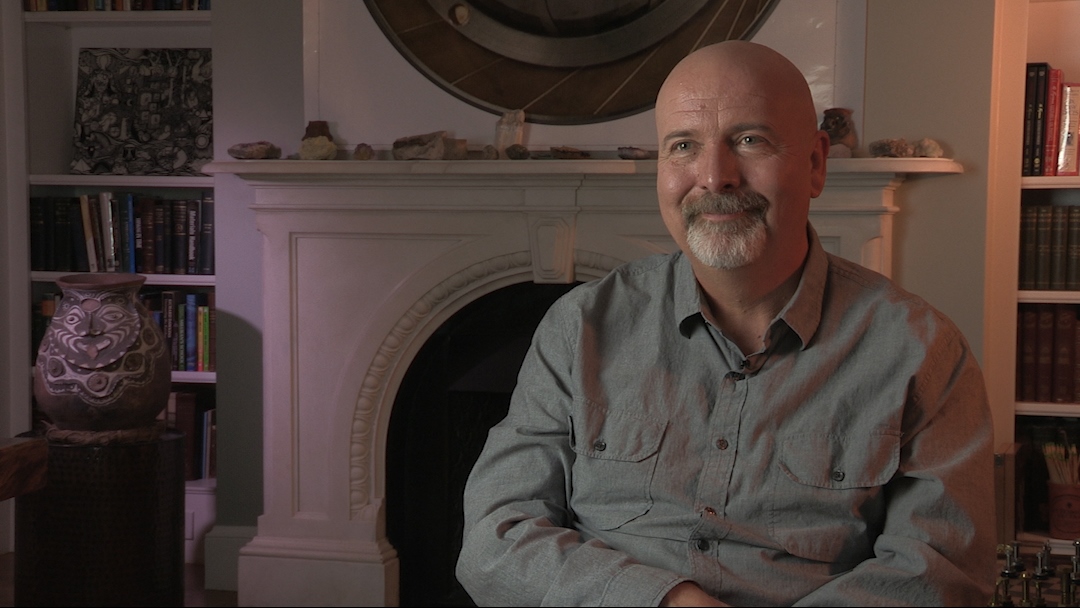NEXT STORY

The Indian village that made idols
RELATED STORIES

NEXT STORY

The Indian village that made idols
RELATED STORIES


|
Views | Duration | |
|---|---|---|---|
| 31. Saved by an elephant | 114 | 03:07 | |
| 32. Stuck on a rock slide | 108 | 02:07 | |
| 33. My fondness for India | 126 | 01:30 | |
| 34. My first memory of Africa | 113 | 03:30 | |
| 35. How a diplomat's wife saved a chicken dinner | 96 | 02:38 | |
| 36. Africa - a place of warm hugs and warm smells | 102 | 01:00 | |
| 37. Feeling safe in Africa | 100 | 02:27 | |
| 38. Indian festivals | 113 | 02:02 | |
| 39. The Indian village that made idols | 110 | 01:31 | |
| 40. An egg joke that backfired | 111 | 01:06 |


One thing that was wonderful about India is there was always a festival going on. There was a holiday almost every day. And so there was a holiday called Holi for example where you got brightly coloured powder like tempura paint. And you threw it at everybody in the streets. So everybody was covered with bright paint. And it was... I remember as a child just going around being covered with all this paint and throwing paint at other people.
But the most interesting things were the pujas. The religious holidays where on every corner there were these clay idols. And the idols, they would turn over every year on... I think Diwali for instance was a time when you had the Durgas, which were the Kalis that had lots of arms. It was like Durga was I think... Or Kali was dancing on the dead body of her husband with all her arms, each with a weapon. And they would take those and they would put them on boats and put them out into the Hooghly River. And cover them with lights and lamps and candles. And so you would see all of these idols going out to be buried in the river.
Of course that's what they did with people, too. They would put the people on funeral pyres that would float out into the river. And so they'd put bodies into the river, burning bodies, out into the river. The poor people couldn't afford enough to actually burn the whole body so there'd be body parts around the river. But somehow it didn't seem horrifying.
W Daniel Hillis (b. 1956) is an American inventor, scientist, author and engineer. While doing his doctoral work at MIT under artificial intelligence pioneer, Marvin Minsky, he invented the concept of parallel computers, that is now the basis for most supercomputers. He also co-founded the famous parallel computing company, Thinking Machines, in 1983 which marked a new era in computing. In 1996, Hillis left MIT for California, where he spent time leading Disney’s Imagineers. He developed new technologies and business strategies for Disney's theme parks, television, motion pictures, Internet and consumer product businesses. More recently, Hillis co-founded an engineering and design company, Applied Minds, and several start-ups, among them Applied Proteomics in San Diego, MetaWeb Technologies (acquired by Google) in San Francisco, and his current passion, Applied Invention in Cambridge, MA, which 'partners with clients to create innovative products and services'. He holds over 100 US patents, covering parallel computers, disk arrays, forgery prevention methods, and various electronic and mechanical devices (including a 10,000-year mechanical clock), and has recently moved into working on problems in medicine. In recognition of his work Hillis has won many awards, including the Dan David Prize.
Title: Indian festivals
Listeners: George Dyson Christopher Sykes
Christopher Sykes is an independent documentary producer who has made a number of films about science and scientists for BBC TV, Channel Four, and PBS.
Tags: India
Duration: 2 minutes, 2 seconds
Date story recorded: October 2016
Date story went live: 08 August 2017